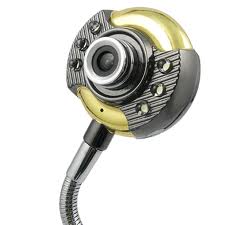CMOS TECHNOLOGY
WHAT IS IMAGE SENSOR:
An image sensor is a semiconductor device that converts an optical image into electrical signals. A CMOS image sensor is a device that converts an optical image into electrical signals using MOS (metal oxide semiconductor) transistors.
The CMOS image sensor sequentially detects electrical signals of each unit pixel in a switching mode to realize an image through formation of a photodiode and a MOS transistor within a unit pixel. The primary building block of an image formed by a CMOS image sensor is a pixel. The pixels of a CMOS image sensor are semiconductor devices
that transform incident light photons into current signals. The signal produced by each pixel is generally extremely small, but is related to the amount of incident light photons. In a CMOS image sensor, the active elements of a pixel cell perform the necessary functions of photon to charge conversion, accumulation of image charge, transfer of charge to the sensing node accompanied by charge amplification, resetting the sensing node to a known state before the transfer of charge to it, selection of a pixel for readout, and output and amplification of a signal representing pixel charge from the sensing node. In the imaging field, CMOS image sensors have proved to be less expensive to manufacture relative to CCD imaging devices. The primary advantages of CMOS imagers are their relatively low cost generally resulting from the use of standard, high-volume CMOS processes and their ability to be integrated with native CMOS electronics for control and image processing.
Top Features of a CMOS Camera:
- CMOS traditionally consumes little power. Implementing a sensor in CMOS yields a low-power sensor.
- CMOS chips can be fabricated on just about any standard silicon production line, so they tend to be extremely inexpensive compared to CCD sensors.
- Because each pixel on a CMOS sensor has several transistors located next to it, the light sensitivity of a CMOS chip tends to be lower. Many of the photons hitting the chip hit the transistors instead of the photodiode.
- CMOS sensors traditionally have lower quality, lower resolution and lower sensitivity. CMOS sensors are just now improving to the point where they reach near parity with CCD devices in some applications. CMOS cameras are usually less expensive and have great battery life.








September 24th, 2010 at
[…] This post was mentioned on Twitter by Ron Gibson, iWatchSystems LLC. iWatchSystems LLC said: CMOS TECHNOLOGY http://dlvr.it/5nlCB […]